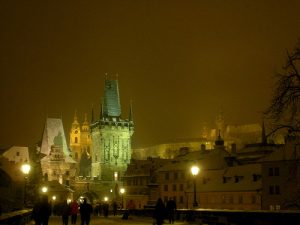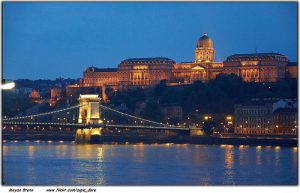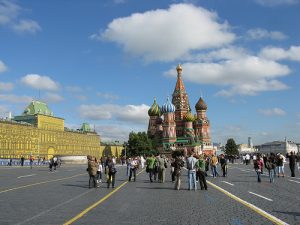Eastern Europe was once a back water area recovering from communism, but in recent years it has become the hottest of
travel hotspots.
Below we list our four favourite areas in this huge and diverse region.

Prague – The New Paris
Prague, the Czech Republic capital and heart of the country, features in the top 10 list of most popular cities to visit and is widely regarded as one of the most beautiful cities in the world.
The city centre is a mélange of stunning architecture displaying Gothic, Baroque, Neoclassical and Art Nouveau styles, amongst others.
The Astronomical Clock, built into the side of the Old Town Hall, is one of the major sights of the city and on the hour, every hour, you can observe a small trap door opening where Christ marched out ahead of his disciples, while the skeleton of death tolls the bell to a defiant statue of a Turk.
Beyond the medieval lanes of the Old Town and the Castle District, there is an entirely different cosmopolitan city to explore. Search out the riverside parks, museums and art galleries, plus beer gardens where you can enjoy some world famous Czech beer.
After a day of sightseeing and admiring the beauty of this city, stroll Charles Bridge, which spans over the majestic Vltava River, and take a few holidays snaps to remember the trip. Although it might not be long before you are back in Prague, as 30% of visitors are thought to return to this magnificent city.

Budapest – A Tale of Two Cities
Budapest is the capital of Hungary and Hungarians are very proud of their city, owing to its contribution to European culture, especially in the field of music, a language one doesn’t need to speak to appreciate.
The city is divided into 23 numbered districts, which are written in Roman numerals but can more simply be divided into the two parts, which comprise Buda and Pest, with the romantic Danube River running through the middle.
Buda is the hilly west side, which is thought to be the most charming, with its cobbled streets and medieval buildings. From Buda you can enjoy a wonderful view of the city, river and mountains, plus visit the Citadella, a huge stone fortress, and the Royal Palace, which was bombed during the Second World War and rebuilt thereafter.
Pest is the flat, east side of the Danube and is the modern commercial core of the city. After exploring Buda and Pest, you can end the trip with a relaxing boat ride along the delightful River Danube and see all the sights from the water.

Warsaw – Destroyed and Rebuilt
Walking through Warsaw’s pristine Old Town and Royal Castle area, you’d think the city had enjoyed a comfortable existence for the past 200 years, but you’d be wrong. At the end of World War II, almost the entire city lay in rubble and ruin.
However historic buildings, palaces, churches and architectural complexes were all reconstructed with great care, and today, Poland’s capital is a thriving, dynamic and progressive city, the epitome of a Polish nation firmly fixed on the future.
UNESCO appreciated Warsaw’s monuments and relics, and therefore honoured the city by putting the Historic Centre of Warsaw on the World Heritage List, and at the end of the visit you will have to agree that Poland’s capital really is a gem.

Moscow – A Sight to be Seen
Home to many iconic buildings from Russia’s extremely colourful past, Moscow is deservedly the Russian capital.
Embodying everything Russian, Moscow is filled with sights so big, bright and colourful that they are hard to imagine unless you’ve seen them for real.
For the larger part of eight centuries, the Kremlin, at the very heart of Moscow, has been the seat of power for the grand princes, tsars and most recently presidents, as well as an important religious site. The Kremlin is now one of the biggest museums in the world, which, in its chambers and cathedrals, houses state regalia of Russia, invaluable icons and treasures of Russian tsars.
For Westerners, the adjacent Red Square, especially the bulbous, multicoloured domes of St. Basil’s Cathedral, have been an image synonymous with the Soviet Union and Russian state. Combine seeing these famous sights with a boat cruise along the Nava River and a night at the ballet for a truly memorable trip.
Did you know…
PRAGUE’S famous castle has been the home to a Czech King, President and even Roman Emperor and is also able to boast the largest castle area in the world. It’s a whopping 18 acres in total, with numerous courtyards and subsidiary buildings in its grounds.
The Czechs drink more beer per capita than other country in the world. Each head will sink about 43 gallons a year on average.
A major attraction of BUDAPEST is the 80 geothermal springs and the city also has the world’s largest thermal water cave system, second largest synagogue and third largest Parliament building.
WARSAW is one of the tallest cities in Europe with 11 of the tallest skyscrapers in Poland being located in the city. The tallest structure, Palace of Culture and Science, is the 7th tallest building in the EU.
BUDAPEST is designated as one of the top 100 most liveable cities in the world.
RUSSIA covers 1/7th of the total land of our planet and neighbours more countries than any other country on earth.
WARSAW is known as the ‘phoenix city’, as it rose from the ashes when rebuilt after being destroyed during World War II.
Images courtesy of flickr users thisisbossi, comzerrad, Moyan Brenn, Dario Garivini.

